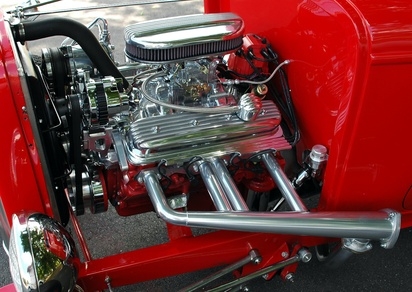
In the mid-80s, most domestic vehicles began to utilize fuel injection as the primary induction system. Fuel injection has been a staple of high performance and racing vehicles for decades, with the primary system being mechanical fuel injection as opposed to electronic fuel injection. However, some racing sanctioning bodies, such as NASCAR, still require all of their participants to use carburetors. Many drag racing vehicles also utilize this older technology with great success. The trick is knowing how to diagnose problems.
Open the hood. If you have tried unsuccessfully to start the vehicle, turn the key to the off position and open your hood. Smell the engine compartment for a strong odor of gasoline. If a strong gasoline odor is present, it is a good indicator that the problem is the needle and seat.
Remove the air cleaner. Remove the wing nut on the top of the air cleaner assembly by turning it counterclockwise with your hand. Lift the lid off of the assembly and remove the filter element. Set all of these to the side and out of the way. Look into the carburetor and check for signs of wetness. If there is a sign of wetness, continue on. If not, the problem is not likely in the needle and seat.
Remove a spark plug. Pull an ignition wire free from one of the spark plugs (any one will work) and place the spark plug wrench over the spark plug. Turn the wrench counterclockwise to remove the plug. Check the spark plug for wetness. If the plug is wet, continue on. If not, the problem is not likely in the needle and seat.
Check the fuel pressure. Remove the fuel line from the carburetor with a wrench. Place a clean rag under the fitting's connection to soak up any spilled fuel. Remove the vehicle's coil wire free from the distributor cap with your hand and set it out of the way. Place the fuel pressure gauge's fitting into the open fuel line and turn the engine over a few revolutions (four or five seconds). Check the reading on the gauge. Compare this reading to the manufacturer's recommendation for your specific model and style of Holley carburetor. The typical operating pressure of a carburetor is six to eight pounds of fuel pressure. If your reading falls within those parameters, continue on. If not, the problem is not likely in the needle and seat.
Diagnose the problem. If you have continued on to this point, you have a bad needle valve. The correction is to remove the carburetor and replace the needle and seat assembly. This assembly will be a part of most carburetor rebuild kits. These kits can be found in most auto parts supply stores and have very detailed instructions.